Automatic License Plate Readers (ALPRs) are technological systems designed to read and record vehicle license plates. Using high-speed cameras and specialized software, these devices capture images of license plates and convert them into digital data.
This data is then compared against various databases to identify vehicles of interest, such as those reported stolen or associated with criminal activities. ALPRs are commonly used by law enforcement agencies for surveillance and crime prevention, as well as by parking management systems to enforce parking rules and manage parking lots efficiently.
Despite their benefits, ALPRs also raise significant privacy and data security concerns.
How ALPRs Capture Images
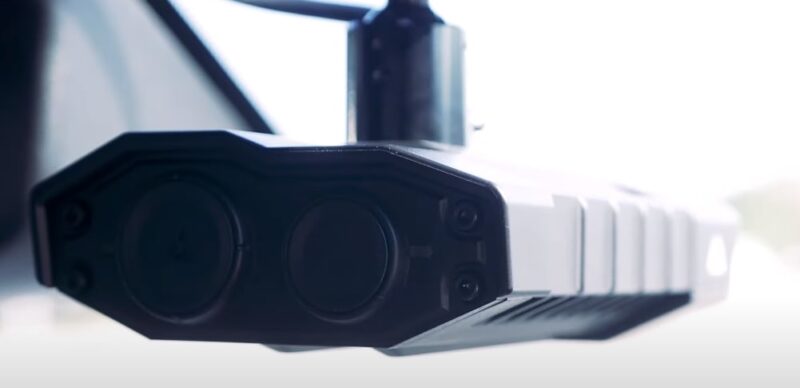
Automatic License Plate Readers (ALPRs) capture images using high-speed cameras designed to work in various environments and lighting conditions. These cameras are strategically positioned to maximize their field of view, often mounted on stationary structures like poles and traffic lights, or on moving vehicles like police cruisers.
The technology behind ALPR cameras allows them to capture clear images of license plates even when vehicles are moving at high speeds or in low-light conditions. The cameras use infrared (IR) illumination to enhance visibility in darkness, ensuring that the plates are legible in both day and night settings. This capability is crucial for applications that require around-the-clock monitoring, such as law enforcement and traffic management.
ALPR cameras continuously scan their surroundings, capturing multiple images per second. This rapid capture rate increases the likelihood of obtaining a clear shot of each license plate that passes through the camera’s field of view. The cameras are also equipped with motion detection features to help differentiate between moving vehicles and stationary objects, reducing false captures.
The images captured by ALPR cameras include not only the license plate but also the vehicle’s make, model, and color. Some advanced systems can capture additional details such as the driver’s face and the vehicle’s occupants, providing more comprehensive data for law enforcement and security purposes.
Once the images are captured, they are transmitted to a central processing unit, where they are stored temporarily before being processed further. The transmission can occur via wired or wireless networks, depending on the installation setup. In mobile ALPR systems, such as those mounted on police vehicles, the data is typically transmitted to the central server at regular intervals or upon returning to a base station.
The effectiveness of ALPR image capture depends on several factors, including the quality of the camera, the positioning of the camera, and the environmental conditions. High-quality cameras with advanced features like IR illumination and motion detection are more likely to capture accurate and usable images, even in challenging conditions.
Optical Character Recognition (OCR) in ALPRs
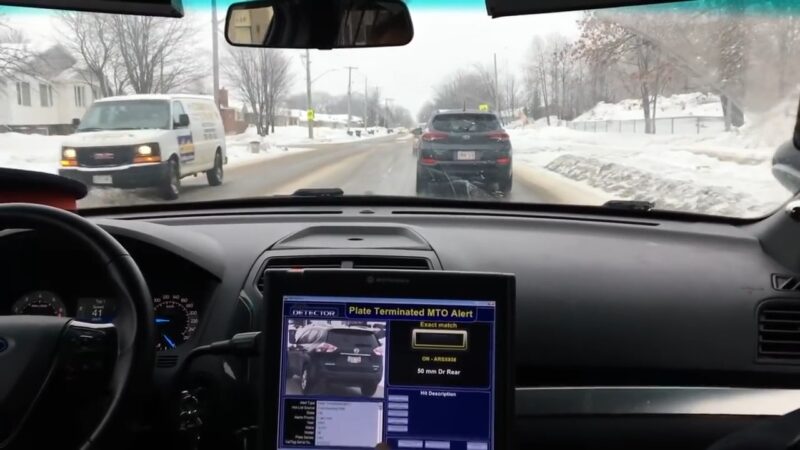
Optical Character Recognition (OCR) is a crucial component of ALPR systems, responsible for converting the captured images of license plates into machine-readable text. OCR technology uses sophisticated algorithms to analyze the characters on a license plate, identify them, and translate them into digital data that can be processed by computer systems.
The OCR process begins with the pre-processing of the captured image to enhance its quality. This step involves adjusting the brightness and contrast, reducing noise, and correcting any distortions. The goal is to produce a clear and consistent image that the OCR software can analyze accurately. Pre-processing is especially important for images captured under suboptimal conditions, such as poor lighting or bad weather.
Once the image is pre-processed, the OCR software identifies the area of the image that contains the license plate. This step, known as plate localization, isolates the license plate from the rest of the image, making it easier for the software to focus on the relevant information. Advanced ALPR systems use machine learning algorithms to improve the accuracy of plate localization, adapting to different license plate designs and formats.
After the license plate is localized, the OCR software segments the characters on the plate. This involves dividing the license plate into individual characters, which can then be analyzed separately. The segmentation process is crucial for accurately recognizing each character, especially on plates with complex designs or custom fonts.
The OCR software then compares each segmented character to a database of known characters, using pattern recognition techniques to identify the correct match. This step, known as character recognition, is the core of the OCR process. The software uses statistical models and machine learning algorithms to improve the accuracy of character recognition, learning from previous scans to better identify characters in future images.
Once the characters are recognized, they are assembled into the complete license plate number. This data is then compared to various databases, such as lists of stolen vehicles or vehicles associated with criminal activities. The recognized license plate number is stored in a central database along with other relevant information, such as the date, time, and location of the capture.
OCR technology is constantly evolving, with advancements in machine learning and computer vision improving its accuracy and reliability. Just as ALPR systems use OCR and machine learning to process and interpret license plate data with precision, you may consider this for creating stunning, realistic visuals from text or images. Modern OCR systems can recognize license plates with high precision, even in challenging conditions, making them an essential component of ALPR technology.
Comparing License Plate Data with Databases

Once the OCR software has successfully converted the captured images into text, the next step is to compare this data with various databases. This comparison is essential for identifying vehicles of interest, such as those that are stolen, associated with criminal activities, or flagged for other reasons.
The comparison process begins by transmitting the recognized license plate number to a central server, where it is cross-referenced against multiple databases. These databases can be maintained by different organizations, including law enforcement agencies, parking authorities, and private companies. The databases typically contain lists of license plates along with relevant information about each vehicle.
For law enforcement applications, the databases might include lists of stolen vehicles, vehicles associated with outstanding warrants, or vehicles involved in Amber Alerts. The ALPR system quickly cross-references the recognized license plate number against these lists to identify any matches. If a match is found, the system generates an alert, notifying the relevant authorities so they can take appropriate action.
In parking management, the databases might contain information about vehicles with valid parking permits, those that have exceeded their parking time limits, or those that have outstanding parking violations. The ALPR system compares the recognized license plate number against these lists to determine whether a vehicle is authorized to park in a specific area or if enforcement action is needed.
Private companies, such as insurance firms and credit reporting agencies, might use ALPR data to monitor vehicle movements for various purposes. For example, an insurance company could use ALPR data to verify claims about vehicle locations during an accident, while a credit reporting agency might use the data to track vehicles associated with individuals who have defaulted on loans.
The comparison process involves several steps to ensure accuracy and minimize false positives. The ALPR system uses advanced algorithms to match license plate numbers with the entries in the databases, taking into account potential variations in character recognition. For example, the system might use fuzzy matching techniques to handle common OCR errors, such as misreading a ‘0’ as an ‘O’ or a ‘1’ as an ‘I’.
In addition to comparing the license plate number, the system might also consider other factors, such as the make, model, and color of the vehicle. This additional information helps verify the match and reduces the likelihood of false positives. For example, if the recognized license plate number matches a vehicle on the list of stolen cars, but the make and model do not match, the system might flag the entry for further review rather than generating an automatic alert.
The comparison process is typically automated, allowing the ALPR system to process large volumes of data quickly and efficiently. However, in some cases, manual review might be required to verify matches and handle exceptions. For example, law enforcement officers might review the alerts generated by the system to confirm the matches before taking action.
Data Storage and Retention Policies
Data storage and retention are critical aspects of ALPR systems, as they involve handling vast amounts of sensitive information. The data collected by ALPRs, including license plate numbers, timestamps, and location information, must be stored securely and managed according to strict policies to ensure privacy and data protection.
The first step in data storage is the transmission of captured data from the ALPR cameras to a central server. This server can be hosted on-premises by the organization using the ALPR system, or it can be managed by a third-party service provider. The data is typically transmitted over secure networks to prevent interception and unauthorized access.
Once the data reaches the central server, it is stored in a structured database that allows for efficient retrieval and analysis. The database can be indexed by various fields, such as license plate number, date, time, and location, enabling quick searches and queries. Advanced ALPR systems also store additional metadata, such as images of the vehicle and its occupants, to provide more context for each record.
Data retention policies govern how long the ALPR data is stored and how it is managed over time. These policies are influenced by legal and regulatory requirements, as well as organizational needs and privacy considerations. Different jurisdictions have different rules regarding data retention, and organizations must comply with these regulations to avoid legal issues.
For example, some jurisdictions might require ALPR data to be deleted after a certain period, such as 30 days or 90 days, unless it is needed for ongoing investigations or legal proceedings. Other jurisdictions might allow for longer retention periods, particularly if the data is used for traffic management, urban planning, or other public safety purposes.
In addition to legal requirements, organizations must also consider best practices for data retention. This includes implementing data minimization principles, which involve only retaining data for as long as it is necessary for the intended purpose. Organizations should also regularly review their data retention policies to ensure they remain compliant with changing regulations and industry standards.
Many jurisdictions require organizations to notify individuals about the use of ALPR technology and how their data will be used and stored.
Automatic License Plate Readers (ALPRs) utilize high-speed cameras to capture images of license plates on vehicles as they pass by. These cameras are strategically mounted on fixed structures like traffic lights and poles or on moving vehicles such as police cruisers. The goal is to maximize coverage and ensure that the cameras can capture clear images under various conditions.
Applications in Law Enforcement
ALPR technology is widely used in law enforcement for various applications, providing a powerful tool for crime prevention, investigation, and traffic enforcement. The ability to automatically read and analyze license plates in real-time allows law enforcement agencies to respond quickly to potential threats and gather valuable data for ongoing investigations.
Automatic License Plate Readers (ALPRs) use high-speed cameras to capture images of license plates on vehicles. These cameras are installed in various locations, such as on traffic lights, poles, or mounted on police cars. The primary goal is to capture clear images of license plates under different conditions.
High-Speed Cameras and Their Features
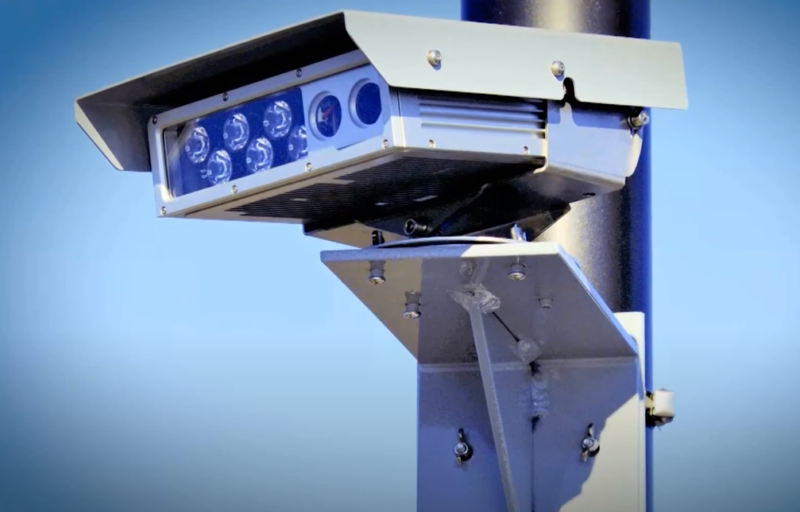
- Infrared Illumination: ALPR cameras often include infrared (IR) illumination to capture images in low-light or night conditions. This ensures that license plates are readable regardless of the time of day or weather conditions.
- Continuous Scanning: These cameras continuously scan their surroundings, capturing multiple frames per second. This increases the likelihood of getting a clear image of each passing vehicle’s license plate.
- Motion Detection: Advanced ALPR systems incorporate motion detection to distinguish between moving vehicles and stationary objects, thereby reducing false captures.
Image Capture Process
- Multiple Frames: The cameras capture several images per second, ensuring multiple opportunities to obtain a clear image of the license plate.
- Transmission: Captured images are transmitted to a central processing unit. In mobile setups, like police vehicles, data might be transmitted in real-time or uploaded later when the vehicle returns to a base station.
- Environment Adaptability: High-resolution cameras can adapt to various environmental conditions, including changes in light and weather, ensuring the system operates effectively around the clock.
Challenges and Solutions
- Weather Conditions: Rain, fog, and snow can obscure license plates. High-resolution cameras with IR capabilities help mitigate these issues.
- High Speeds: Vehicles moving at high speeds can blur images. ALPR systems counteract this by capturing multiple frames and using motion detection to time the captures accurately.
Parking Management Uses
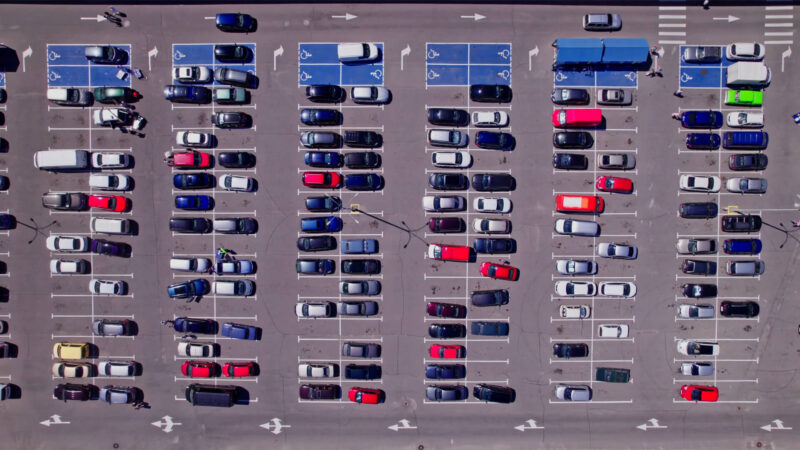
Automatic License Plate Readers (ALPRs) play a significant role in parking management, streamlining operations, enhancing enforcement, and improving overall efficiency. Here’s an in-depth look at how ALPRs are utilized in this domain:
Automated Monitoring and Enforcement
- Time Limits and Violations: ALPR systems automatically monitor vehicles in parking areas, checking if they exceed the permitted time limits. When a vehicle overstays, the system generates an alert for enforcement personnel to issue a citation. This reduces the need for manual patrols and minimizes human error.
- Permit Validation: ALPRs check vehicles against databases of registered parking permits, ensuring that only authorized vehicles park in restricted areas. This is particularly useful in residential zones, university campuses, and corporate parking lots.
Data Collection and Analysis
- Occupancy Rates: By continuously capturing data on parked vehicles, ALPR systems provide insights into parking occupancy rates. This information helps parking authorities understand usage patterns and make informed decisions about parking policies and infrastructure needs.
- Usage Patterns: ALPR data can reveal peak usage times, duration of stays, and seasonal variations. This analysis assists in optimizing parking layouts, adjusting pricing strategies, and planning future expansions.
Customer Convenience
- Seamless Entry and Exit: ALPRs enable a seamless parking experience by allowing automated entry and exit without the need for physical tickets. Vehicles are recognized by their license plates, and parking fees are automatically calculated based on the duration of the stay.
- Mobile Integration: Many ALPR systems integrate with mobile apps, allowing users to pay for parking, check availability, and receive notifications about their parking status. This improves the user experience and reduces the need for physical payment kiosks.
Long-Term Planning and Policy Development
- Resource Allocation: Data from ALPRs helps parking authorities allocate resources more efficiently. For example, areas with consistently high occupancy might require more frequent patrols, additional signage, or expanded facilities.
- Dynamic Pricing: Understanding parking demand through ALPR data allows for dynamic pricing models, where parking rates can be adjusted based on real-time demand. This helps in managing congestion and ensuring optimal use of parking spaces.
Challenges and Considerations
- Privacy and Data Protection: While ALPRs offer numerous benefits, they also raise privacy concerns. It’s essential for parking authorities to implement robust data protection measures and be transparent about data usage.
- Infrastructure Costs: The initial setup of ALPR systems, including camera installation and software integration, can be expensive. However, the long-term operational savings and efficiency gains often justify the investment.
ALPR technology revolutionizes parking management by automating enforcement, enhancing customer convenience, and providing valuable data for strategic planning.
Security and Surveillance Benefits
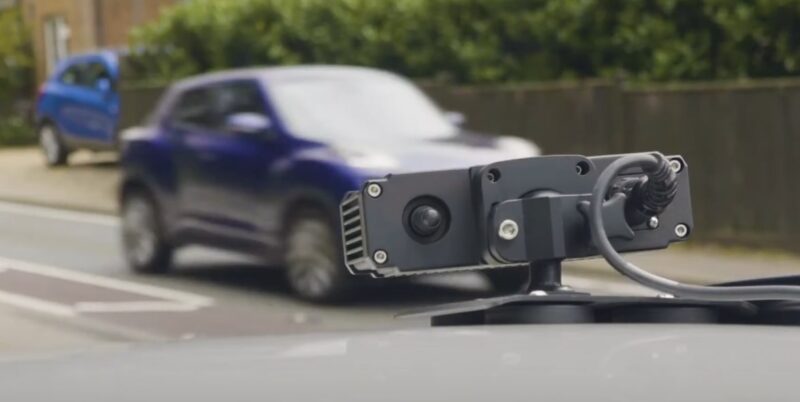
ALPR technology offers substantial benefits for security and surveillance applications, providing enhanced monitoring, rapid response capabilities, and valuable data for law enforcement and security agencies. Here’s a detailed exploration of these benefits:
Enhanced Monitoring
- Continuous Surveillance: ALPR systems provide continuous monitoring of vehicles in real-time, capturing license plate data and other relevant details such as the make, model, and color of the vehicle. This constant surveillance helps in maintaining high levels of security in monitored areas.
- Integration with Other Systems: ALPRs can be integrated with other security systems, such as CCTV cameras, access control systems, and alarm systems. This integration allows for a comprehensive security infrastructure, where data from multiple sources can be correlated for better situational awareness.
Rapid Response and Alerts
- Real-Time Alerts: When an ALPR system identifies a vehicle of interest, such as a stolen car or one associated with a wanted individual, it generates real-time alerts. These alerts are sent to security personnel or law enforcement officers, enabling a swift response.
- Hotlists: ALPR systems maintain hotlists of vehicles of interest. These lists can be updated dynamically, allowing for immediate action when a vehicle on the list is detected. This capability is crucial for tasks such as tracking stolen vehicles or locating suspects.
Data Collection and Forensic Analysis
- Incident Investigation: ALPR data provides a valuable resource for post-incident investigations. By analyzing historical data, investigators can trace the movements of a suspect vehicle, identify patterns, and gather evidence for legal proceedings.
- Pattern Recognition: Over time, ALPR systems accumulate vast amounts of data that can be analyzed to recognize patterns and trends. This analysis can help identify suspicious activities, such as repeated visits by the same vehicle to sensitive locations.
Deterrence
- Visible Presence: The presence of ALPR cameras can act as a deterrent to criminal activities. Knowing that their vehicle’s license plate can be easily tracked may discourage potential offenders from committing crimes in monitored areas.
- Enhanced Patrols: Mobile ALPR units on patrol vehicles extend the reach of surveillance. These units can cover larger areas and respond quickly to alerts, increasing the overall effectiveness of security operations.
Operational Efficiency
- Resource Allocation: By providing real-time data and alerts, ALPR systems help security agencies allocate their resources more efficiently. Personnel can focus on high-priority tasks and areas, improving the overall effectiveness of security operations.
- Automated Processes: Automation of tasks such as license plate recognition and data comparison reduces the workload on security personnel, allowing them to concentrate on more critical aspects of their job.
Privacy Concerns
While ALPR technology offers numerous benefits for law enforcement, parking management, and security, it also raises significant privacy concerns. These concerns stem from the continuous monitoring and recording of vehicle movements and the potential misuse of collected data. Here’s a detailed look at these privacy issues:
Continuous Monitoring and Surveillance
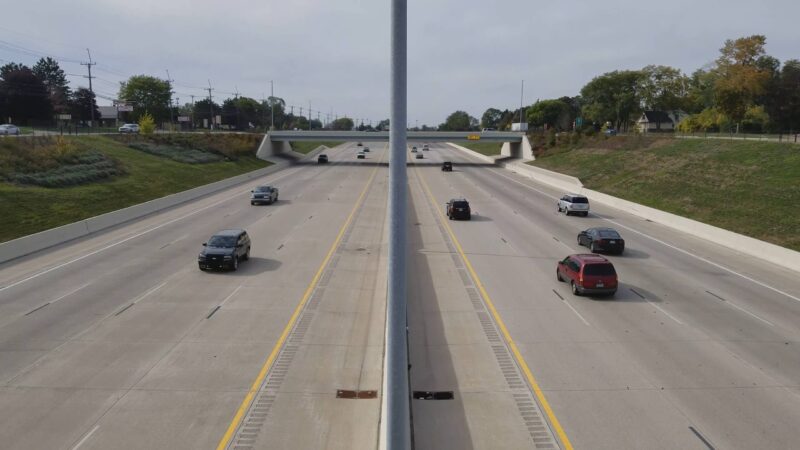
- Mass Surveillance: ALPR systems continuously capture and store data on all vehicles passing through their field of view, regardless of whether the vehicles are linked to any criminal activity. This can be perceived as a form of mass surveillance, raising concerns about the erosion of privacy in public spaces.
- Location Tracking: The ability to track the movements of vehicles over time allows for detailed location tracking of individuals. This information can reveal sensitive details about a person’s life, such as their home and work addresses, places they visit regularly, and their daily routines.
Data Retention and Use
- Retention Policies: The length of time ALPR data is retained can vary widely. Extended retention periods increase the risk of misuse or unauthorized access to the data. Clear and transparent retention policies are essential to address these concerns.
- Secondary Use of Data: ALPR data collected for one purpose (e.g., traffic enforcement) can potentially be used for other purposes (e.g., surveillance of political activities), raising ethical and legal questions about the appropriate use of this information.
Access and Security
- Unauthorized Access: The large volumes of sensitive data collected by ALPR systems must be protected from unauthorized access. Data breaches or unauthorized access can lead to the misuse of personal information.
- Data Sharing: Sharing ALPR data between different agencies and organizations can enhance security but also increases the risk of misuse. Strict protocols and agreements are needed to ensure that data sharing complies with privacy laws and ethical standards.
Legal and Ethical Considerations
- Informed Consent: In many cases, individuals are unaware that their license plate data is being collected and stored. Ensuring informed consent and transparency about data collection practices is crucial for maintaining public trust.
- Balancing Security and Privacy: Policymakers and organizations must balance the benefits of ALPR technology for security and law enforcement with the need to protect individual privacy rights. This balance is often challenging and requires ongoing dialogue and review.
Regulations and Oversight
- Legislation: Various jurisdictions have enacted laws and regulations to address the privacy concerns associated with ALPR technology. These regulations often include requirements for data retention, access controls, and transparency.
- Oversight Mechanisms: Effective oversight mechanisms are necessary to ensure that ALPR systems are used responsibly and in compliance with legal and ethical standards. This includes regular audits, public reporting, and the establishment of independent oversight bodies.
Public Perception
- Trust: Public trust in the use of ALPR technology is essential for its successful implementation. Transparency about data collection practices, clear privacy policies, and effective communication with the public can help build and maintain trust.
- Community Engagement: Engaging with communities to explain the benefits and address the concerns of ALPR technology can foster a more informed and supportive public.
Last Words
Automatic License Plate Readers (ALPRs) offer powerful capabilities for law enforcement, parking management, and security applications. They capture and analyze license plate data in real time, providing valuable insights and enhancing operational efficiency.
However, their use also raises significant privacy and data security concerns. It is crucial to balance the benefits of ALPR technology with robust privacy protections, data security measures, and compliance with legal regulations.

